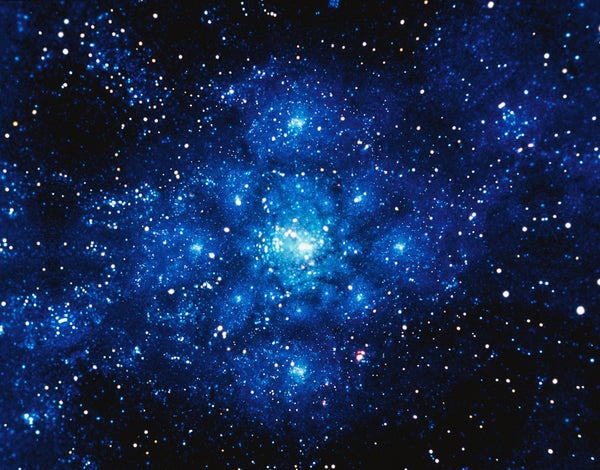Take any square kilometer of Earth’s surface. About once a year an extraordinary event occurs in the sky directly above that patch of land or sea: the hefty nucleus of a heavy element slams into the top of Earth’s atmosphere at close to the speed of light.
Scientists have been unable to tell where these particles come from, in part because their trajectories can be nudged by galactic magnetic fields. Another puzzle is how the particles reach such blistering speeds.
Two theories dominate attempts to explain these mysteries. One posits that the particles mostly come from exploding stars and other high-energy phenomena in our galaxy. The other speculates that the particles are produced beyond our galaxy—perhaps in the active cores of other galaxies surrounding the Milky Way. Now a study in the journal Science supports that second notion. [Link to come]
On supporting science journalism
If you're enjoying this article, consider supporting our award-winning journalism by subscribing. By purchasing a subscription you are helping to ensure the future of impactful stories about the discoveries and ideas shaping our world today.
Amazingly, any of these “ultra-high-energy cosmic rays” has the kinetic energy of an apple falling from a tree to the ground. That means that Isaac Newton, or you, would definitely feel it hit your head.
Luckily, that never happens. Instead, when these cosmic speed demons strike our atmosphere they create a brief flash of light, as well as high-altitude “air showers” of less-energetic particles that harmlessly dissipate.
In the new study, an international team of more than 400 researchers analyzed a dozen years’ worth of these events. They used the Pierre Auger Observatory, a Rhode-Island-sized array of telescopes and 1,600 particle detectors operating in western Argentina, to record air showers from more than 30,000 ultrahigh-energy cosmic rays. And it turns out that most of the particles appear to come from a broad, relatively galaxy-rich region of sky located about 90 degrees away from the Milky Way’s center. Which suggests that they arise in faraway galaxies perhaps from spinning supermassive black holes, rather than anywhere closer to home. What a long, strange trip they’ve made.
—Lee Billings
[The above text is a transcript of this podcast.]

